
Alex Barrows has made the first ascent of The Last Nacho (9a), at Raven Tor in the Peak District.
His third FA at 9a, The Last Nacho links together a number of pre-existing boulders and routes at the Tor, and has been described by Alex as his 'hardest piece of climbing' to date.
In addition to having made a further three repeats at 9a, Alex has also climbed a number of hybrid boulder-routes, such as Dai Koyamada's The Wheel of Life (V15) - originally graded 8C+, but now typically thought of as either 8C boulder, or 9a sport - as well as having made the second ascent of Malcolm Smith's Pilgrimage (V14), which receives a sport grade of around 8c+/9a.
We spoke to Alex last week to find out more.
Congratulations on making the first ascent of The Last Nacho! Can you talk us through the route, and the various different boulders and routes that it links together?
Thanks! The link climbs all of Belly Full of Nachos (f8B+) (something around 8B/+ and 20-25 moves long) to its finishing jugs, then heads left past a couple of bolts (~6C) to good kneebars at the second bolt on Mecca - The Mid-life Crisis (8b+). Then up Mecca (low-end 8b+) and onwards to finish up The Crucifixion (8a) at the highest point of the crag (probably ~8a/+) from the end of Mecca.
It's something like 45 metres long, and I think must be longest bit of climbing you can get out of the Tor without getting very sideways and traversing the whole crag. It's very much a dumb linkup that will only be of interest to locals, but it's a fun way to get something a bit more pumpy and full-body out of a cliff that's notorious for its short, fingery routes, and it covers a nice variety of styles.
It's a great structure of route if you like getting tired too - every section is a bit easier that the last so you can get pretty knackered and still not fall off!
How did the idea of the route first come about, and when did you first start trying it?
I think the idea first popped into my head earlier this 'summer' when all the normal summer crags in the peak got drenched and I was looking for something to try at a dry (and preferably local) crag!
I tried the various sections quite a lot for about a month, but you can't really say how long something like this took - I've done almost all of the climbing on it before over the years on various other routes, boulders, and boulder/route link-ups so it was really a question of relearning beta rather than working much out from scratch.
How long were you on the wall for the successful attempt, and how much were you able to recover in the Mecca-kneebar?
I'm not sure, but it must have been quite a while - maybe thirty minutes or so? A long time for a route at the Tor anyway. You can recover a lot at the knees where you meet Mecca, you just need to be a bit patient hanging around and burning your legs in the rest.
The most pumped I got was on the easier top part where I hit that terminal level of fatigue where you just seem to stop recovering even when you're at a really good rest. But that was the most enjoyable bit too - that's exactly what I like about long pumpy routes and it's not easy to find it in the UK.
You seem to have a taste for these bouldery-route link-ups, or for boulders that might as well be routes! What is it about this style of climbing that appeals to you?
I really like long boulders - you can get quite a bit of what I like about redpointing (working out and refining all the sections, flowing through moves you have dialled, and getting pumped or powered out) but with very low faff. I like steep roofy climbing a lot too - kneebars, toe hooks, spinning around... and most long boulders are roofs by necessity! I like having lots of sections to work on too - I get bored of short hard boulders much more quickly. Plus I'm too weak for them!
Really I'd rather spend more time on steep pumpy 'pure' routes rather than these boulder/route hybrids, climbing big routes on cool steep cliffs. But the peak doesn't really give you that option, if you want steep and pumpy you either have to get inventive like this or get in the car and drive somewhere else (and even then, there's really not much in the UK in that style unless you start traversing in the Kilnsey roof).
My motivation for this kind of thing can be fickle though, if I've recently been to Europe then I usually struggle for motivation for links like this, but once I get involved then I generally find myself enjoying the moves and the challenge, and I can forget a bit about how much less objectively good it is than climbing somewhere like Ceuse or Rodellar!
We've heard whispers of an even harder finish up Kaabah (8c+) - is that something you're interested in trying, or was 'The Last Nacho' truly the last?
Yeah, I'm definitely interested in that exit (having a project close to home has a lot of advantages over driving to Yorkshire!) but it will depend on how my fingers feel on those small crimps on Kaabah. I've not pulled on holds that small for a long time so it may just prove too tweaky.
You've suggested that this is probably the hardest piece of climbing you've done, and have given the route a grade of 9a. Are there any challenges specific to grading routes like this one, and how did you settle on the grade?
Grading boulder/route hybrids is always a bit weird - are you grading for how hard the climbing is alone, or how hard the route is to do, accounting for how much easier it is to work and refine the moves on boulders than routes?
I tend to think the latter makes the most sense, and that fits with how these things tend to work in my experience. Grading things at crags where you've spent a lot of time is even more confusing. Normally, how much time something took is a big part of what informs our view on how hard something is, but how do you account for all the days you spent on these things years ago?
Based on a vague 'feel' I think middling 9a might be about right, as I think it's a notch more of a challenge than a low-end 9a like La Fabela Pa La Enmienda (9a) in Santa Linya. DarthGrader suggest anything from mid 9a to easy 9a+ depending on what grades you put in for the different sections, and the numbers it spits out typically need a little bit knocking off when boulders are actually boulders and not on a rope, so I think that probably also means that mid 9a might be about right too.
Hopefully someone else will get bored enough to try it and give their view at some point!

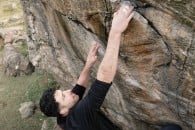

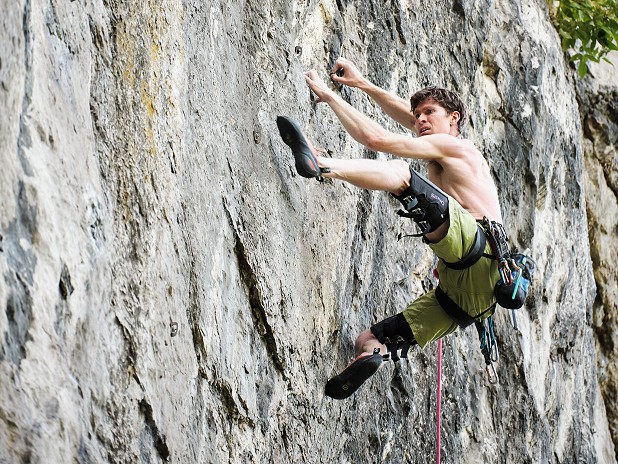
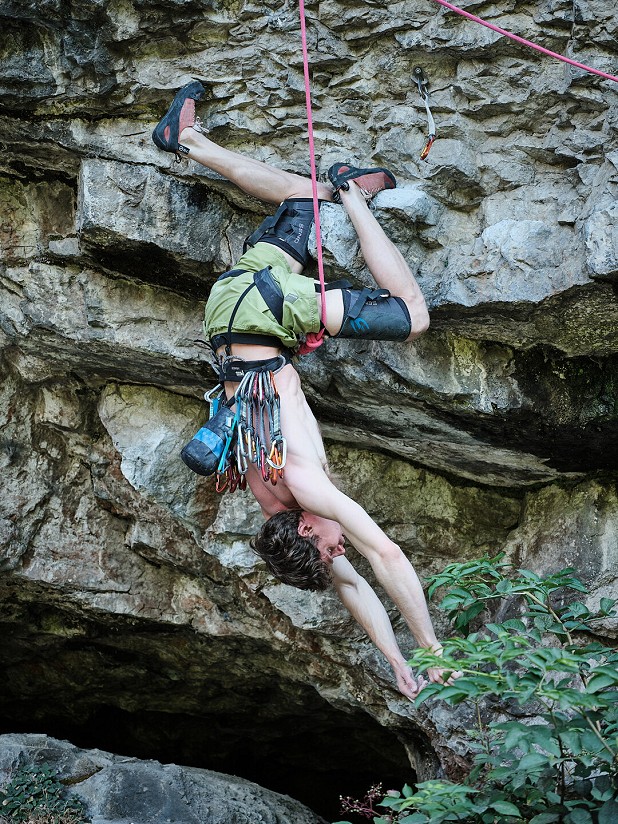

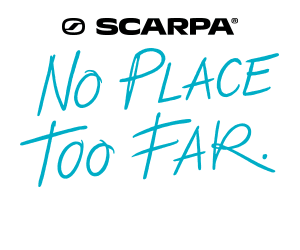



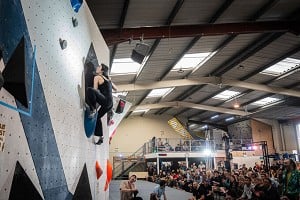
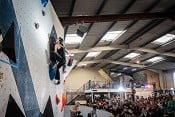




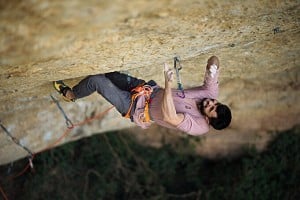
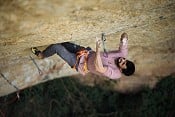


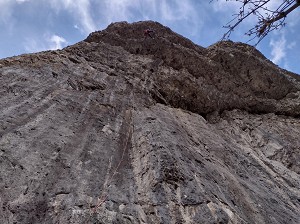
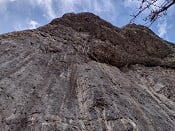
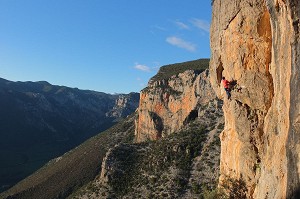
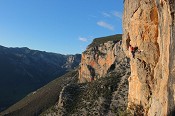


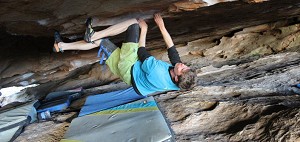

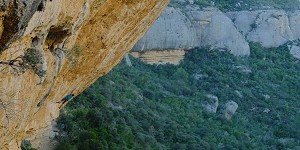

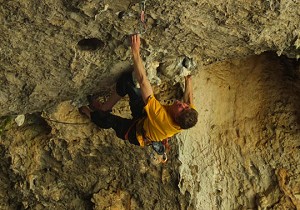
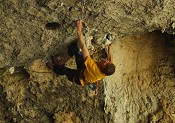
Comments